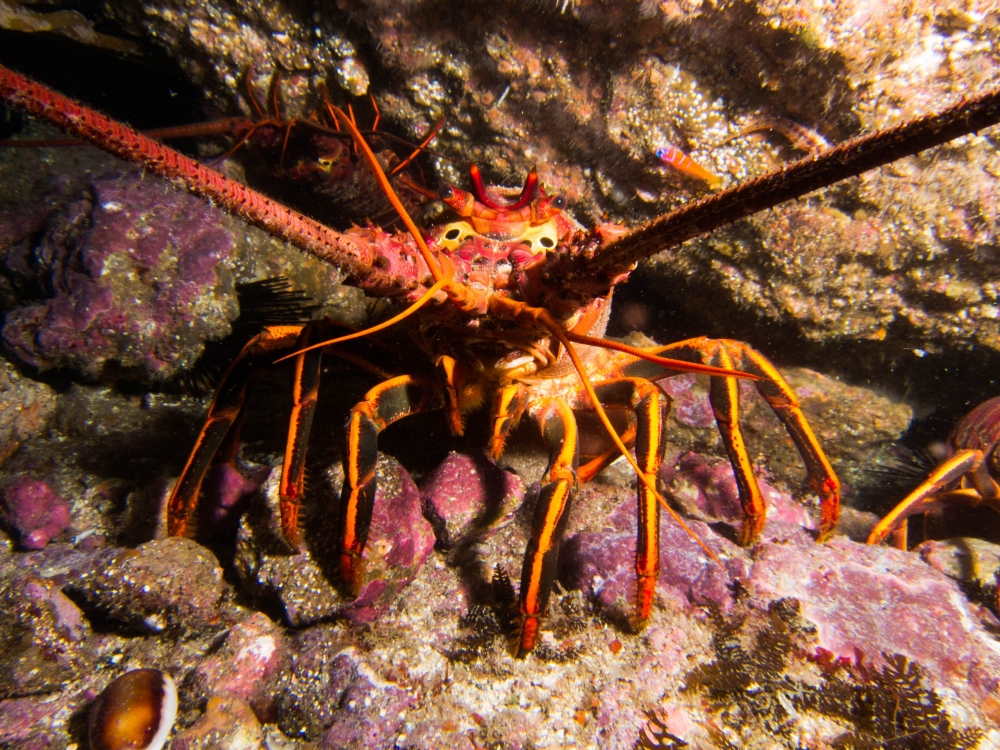Resisting Alien Invasions

Invasive species can be hugely detrimental to marine ecosystems. Take Caulerpa taxifolia as an example.
Dubbed “killer algae” because it crowds out other plants and animals as it colonizes an area with great monotypic stands of vegetation, C. taxifolia displaces rich marine habitats that support a variety of fish and invertebrate life, leaving an area unable to nourish animal life. In 2000, this green alga, native to tropical waters, was found in San Diego County’s Agua Hedionda Lagoon. Known to be highly invasive in the Mediterranean, a massive — and ultimately successful — effort was launched to eradicate it from Southern California waters.
Unfortunately, the same has not been true for Sargassum horneri, another invasive alga first detected in 2003 in Long Beach harbor. In the ensuing years, S. horneri, a fast-growing brown alga native to eastern Asia, spread throughout Southern California and crept up to the Northern Channel Islands off the coast of Santa Barbara.
UC Santa Barbara researchers, who have been conducting long-term monitoring of native kelp forests in marine protected areas (MPAs) around the Northern Channel Islands since 2000, encountered low levels of S. horneri around Anacapa Island in 2009. Five years later, its abundance began to rapidly increase, perhaps partially due to unusually warm waters.
Reviewing years of monitoring data both inside and outside of MPAs, the marine biologists noticed interesting community-level patterns and decided to compare them in different areas around Anacapa with varied levels of marine protection. In the oldest MPA — a complete no-take zone protected since 1978 — they saw less S. horneri than in the newer ones established in 2003. Their analysis appears in the journal Ecology Letters.
“We found evidence for two distinct ecological mechanisms — competition and herbivory — providing resilience, but the community states really aren’t equivalent,” said lead author Jennifer Caselle, a research biologist at the Marine Science Institute (MSI). “On one hand, in the old MPA, we found a healthy kelp forest outcompeting the invasive and in the fished areas, an urchin barren affording herbivory.”
Using Anacapa’s complex set of protection levels, the investigators compared the historic no-take MPA with two newer MPAs: one that prohibits fishing (i.e., a no-take zone) and one that is a partial-take reserve, allowing lobster fishing. The reference zone was an area completely open to fishing.
“The historic MPA has had decades to restore its healthy kelp forests, and resistance to invasion may have resulted from competition with the native algal species, kelps,” said co-author Lindsay Marks, a graduate student in the Department of Ecology, Evolution and Marine Biology whose Ph.D. dissertation focuses on Sargassum. “In areas open to fishing, high densities of herbivores appear to be consuming both the native and the non-native algal species. But in the newer MPAs, which are in transitional states, neither competition nor herbivory was likely strong enough to prevent the invasion of S. horneri.”
According to co-author Katie Davis, a researcher in the Caselle Lab, this work shows that timing is important. “Only the long-term MPA had enough time to develop a healthy community capable of resisting invasion,” she said. “Our analysis shows clearly that the newer MPAs haven’t had enough time to develop resilience to this invasion.”
It is likely, Caselle noted, that the healthy kelp forest developed because the main predators of urchins — California sheephead and California Spiny Lobster — are protected. Those organisms are in high abundance in the historic MPA, where urchin abundance is low.
“Our study shows that resilience does not rely on a single trophic level,” Caselle said. “We looked at the entire community, finding top-down pressure from those protected urchin predators. That reverberated all the way through the food web, ultimately providing resistance to an invasive species. In areas outside the MPAs, those top predators are in low abundance and urchins are in high abundance.”
Today, the S. horneri invasion is extremely widespread in Southern California and in Baja California, with no hope of eradication. “Invasive species are exceptionally difficult to manage once they are established,” Marks said. “The lesson we’re learning from this study is that there might be value in managing the impacts of an invasive species by keeping our communities healthy. However, the key is preventing future invasions.”







